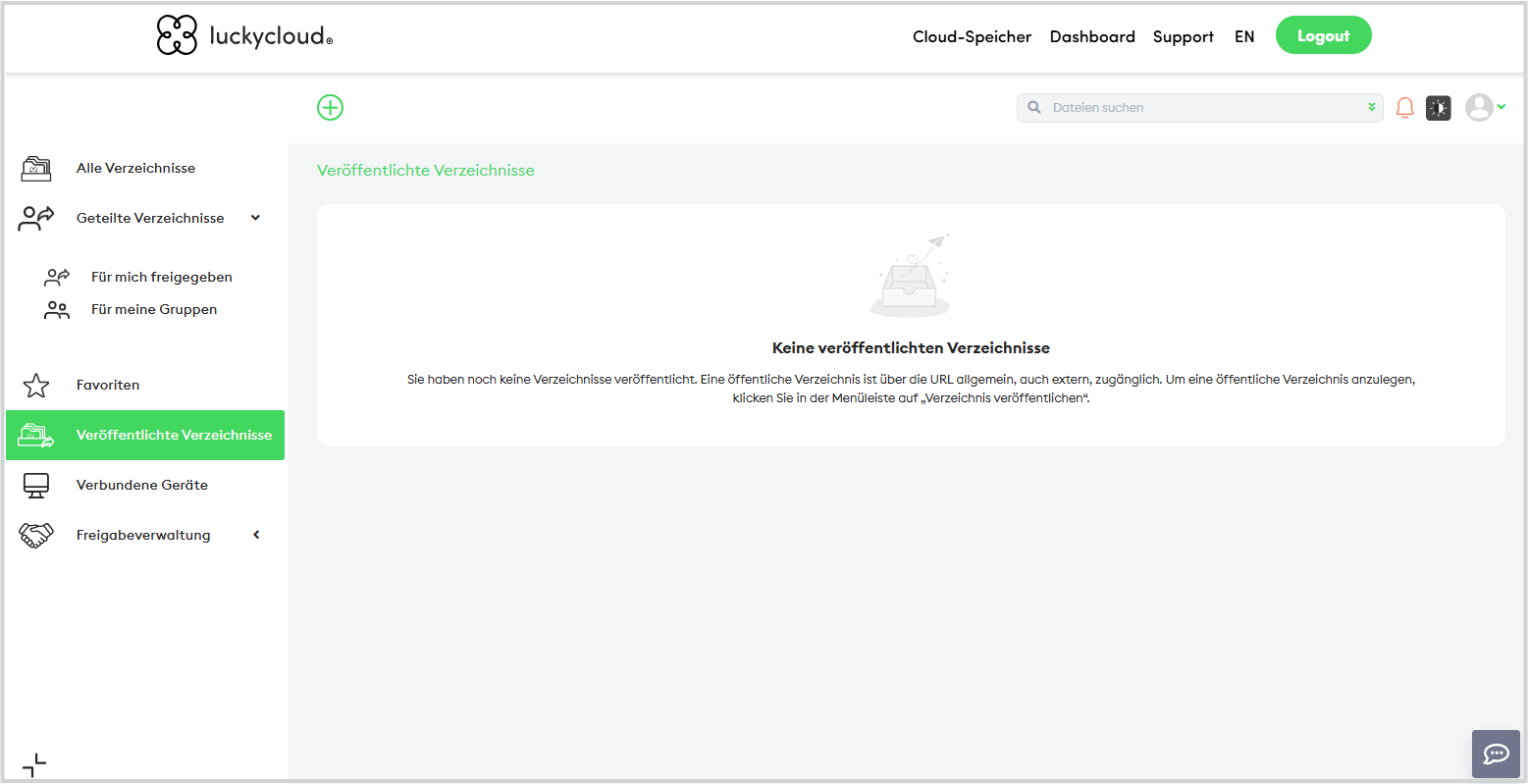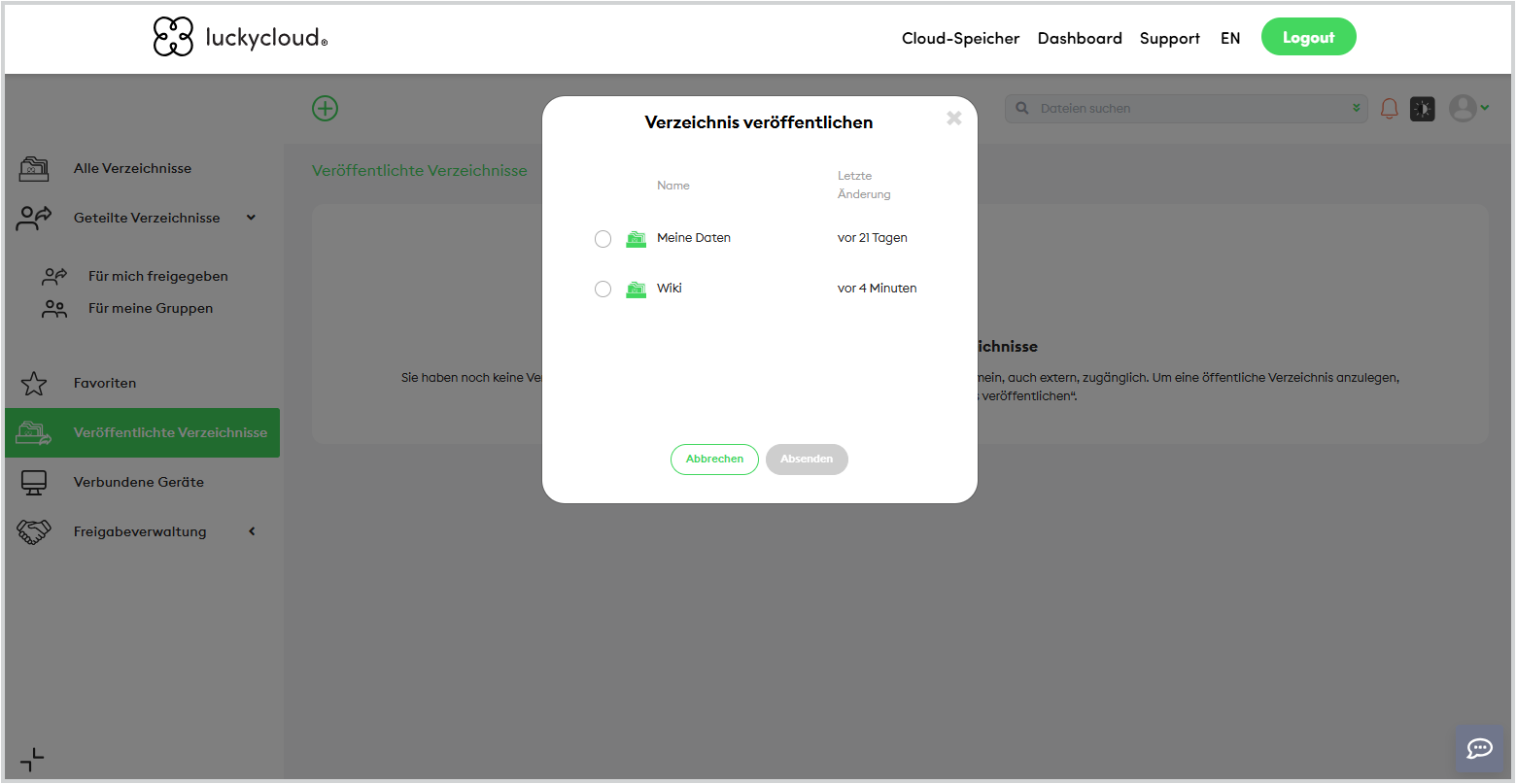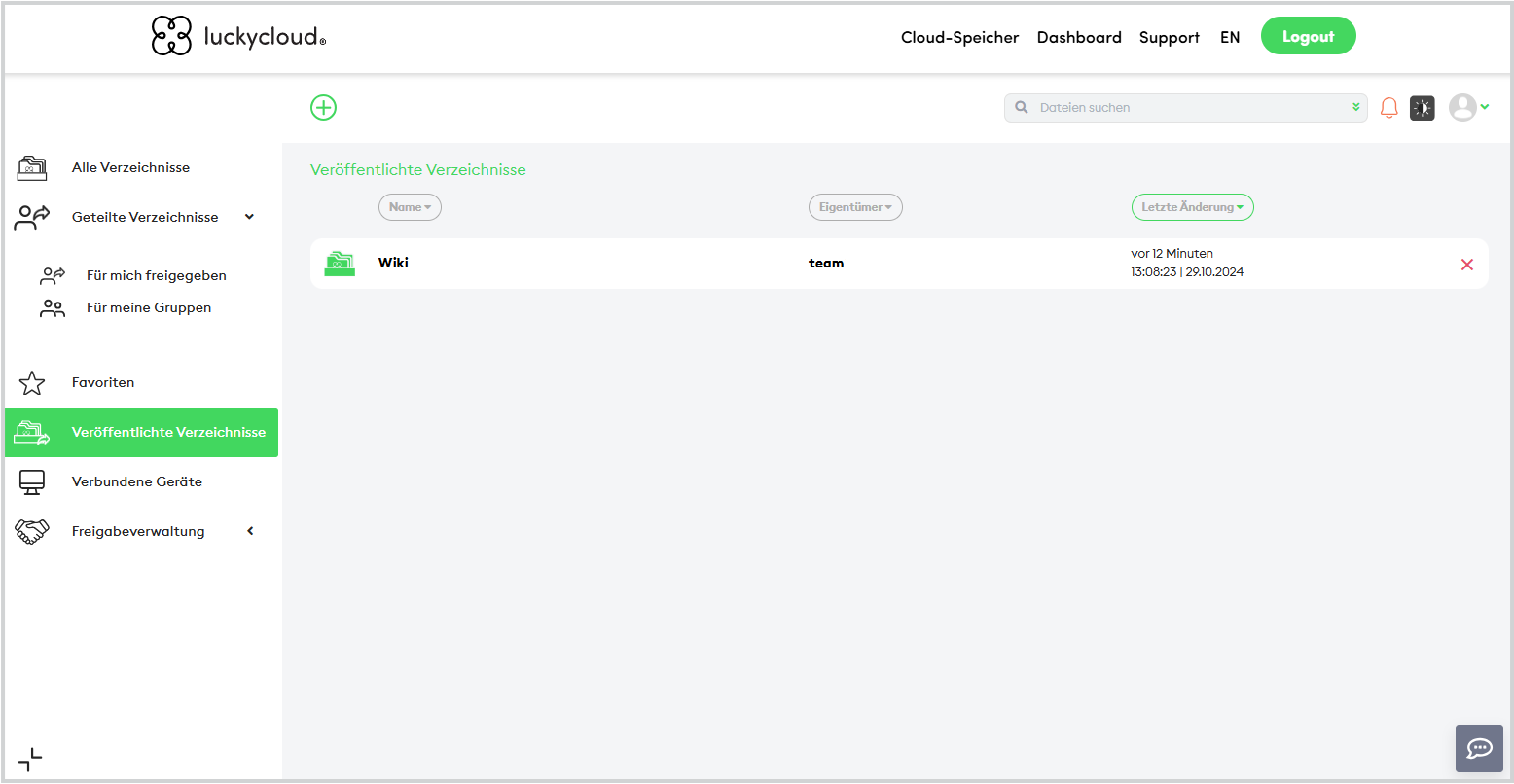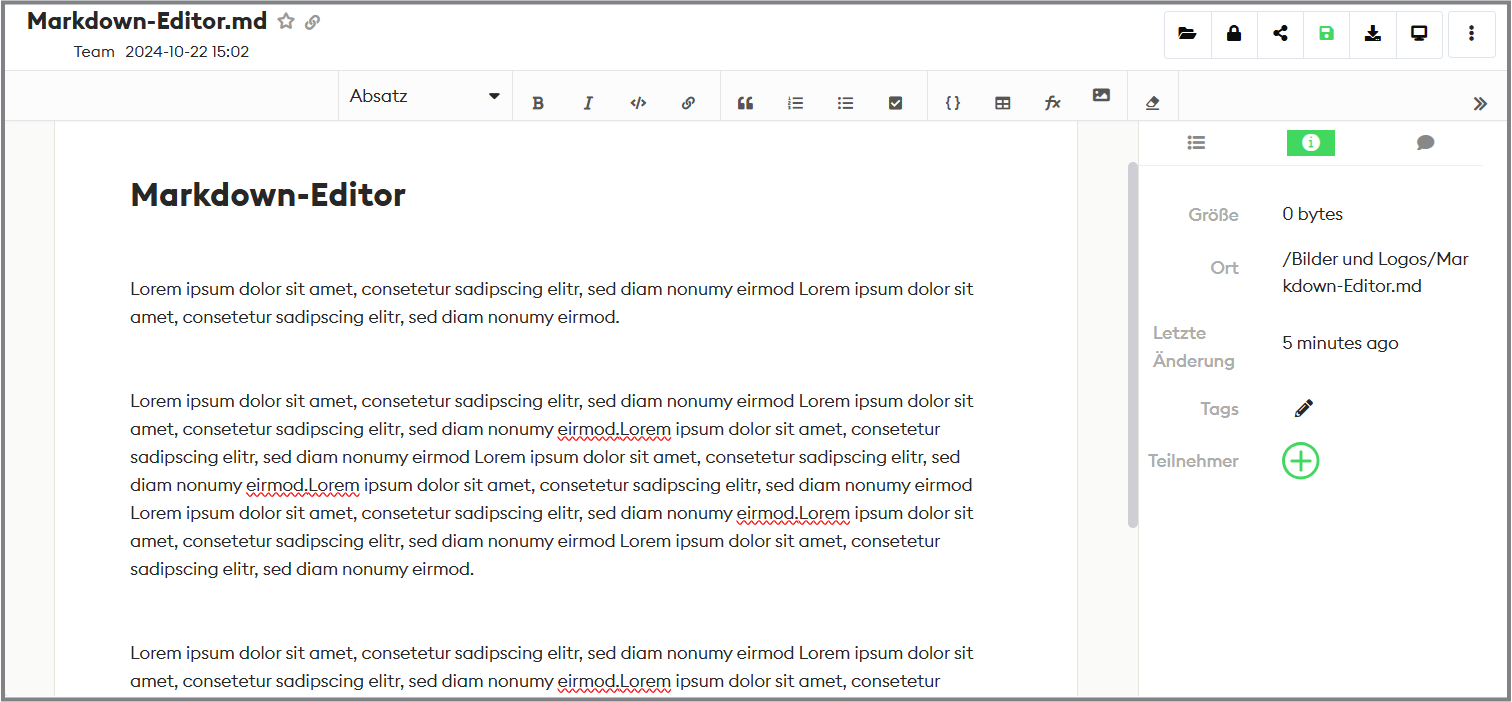Create Published Directories
Highly structured data is best stored in a database. For less structured information, published directories are ideal. Formalizing, structuring, and making knowledge within an organization easily communicable is simple with them. With its published directories, luckycloud offers an ideal complement to its file-sharing features. Public directories in luckycloud make team collaboration even easier.
Published Directories + Sync & Share = Maximum Collaboration
The success of Wikipedia proves: Public directories are ideally suited for encyclopedias. But not only for that. Due to the open and intuitive way in which information is captured, processed, and linked in them, they are also suitable for documenting other, less structured data. Work processes and instructions, manuals, and FAQs are just three examples where published directories showcase their strengths as practical knowledge containers.
Public directories in luckycloud can be used both for internal knowledge management and for publishing information intended for the general public.
Publishing a directory is done with just a few clicks and can be undone if necessary.
- Click on the "Published Directories" menu item in your cloud storage and then on the green plus sign to publish a directory.

- Select the directory you want to publish and click "Submit."

- The published directory now appears in your overview.

Editing entries in a published directory is conveniently possible even for technically inexperienced users thanks to the integrated WYSIWYG editor. Its powerful editing functions for texts, images, and tables also make creating multimedia pages easy.
As targeted extensions of luckycloud's strengths in the Sync & Share area, published directories utilize all the features that make collaboration on files in luckycloud so comfortable:
- cross-platform synchronization
- one-click sharing with other users and third parties
- easy permission assignment
- complete versioning
- integrated full-text search
- easy tagging of files
Implementation of Published Directories in luckycloud
A published directory is represented in luckycloud Storage as a regular directory. The owner of the directory can therefore share it with other users for joint editing using the native luckycloud functions, copy and synchronize it to local devices, and share individual entries for editing with third parties. A user familiar with luckycloud's permission management will immediately find their way around published directories.
The "Published Directories" menu item in the sidebar displays already published directories and allows further directories to be published. A published directory is accessible on the internet under the URL of the luckycloud web interface, supplemented by the folder name of the published directories (e.g., cloud.example.com/published/wiki).
Markdown files serve as containers for wiki entries. These can contain text, images, tables, checklists, and links. Published directories also support linking relevant files. Correspondingly linked files are displayed directly on the page of the published directories and can be accessed directly.
Easy Editing – Smooth Information Exchange

Editing Markdown files is done via the integrated Markdown editor. Even inexperienced wiki authors can get started with it immediately. Formatting changes can be executed – as in office editors – via corresponding icons in the graphical user interface. The formatted text is displayed as such directly. The luckycloud editor can do even more: tables can be comfortably created and edited via assistants, images can be edited directly in the browser, and the version history of the files can be color-coded thanks to the integrated diff function.
As text-based documents, Markdown files can also be viewed and edited without luckycloud's Markdown editor using simple text editors on all platforms. Formatting issues in cross-platform use, which often occur with binary formats like DOCX, do not exist with Markdown.